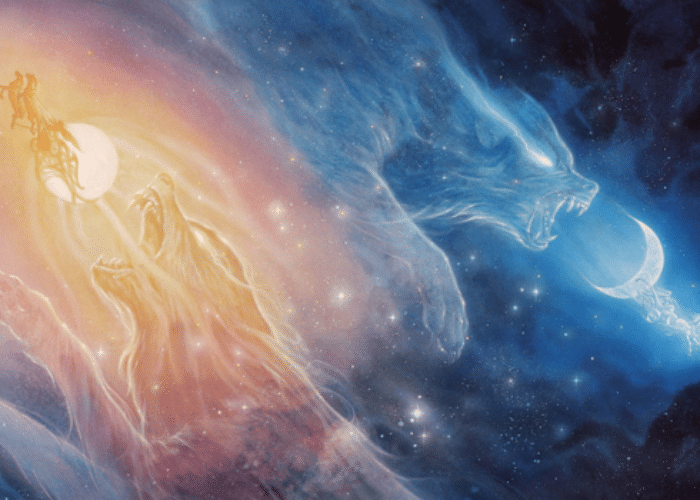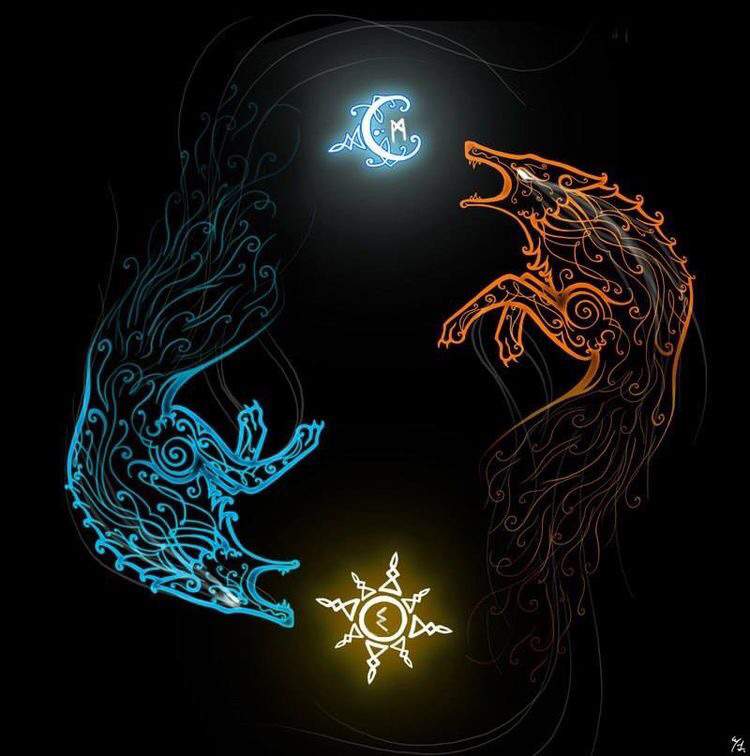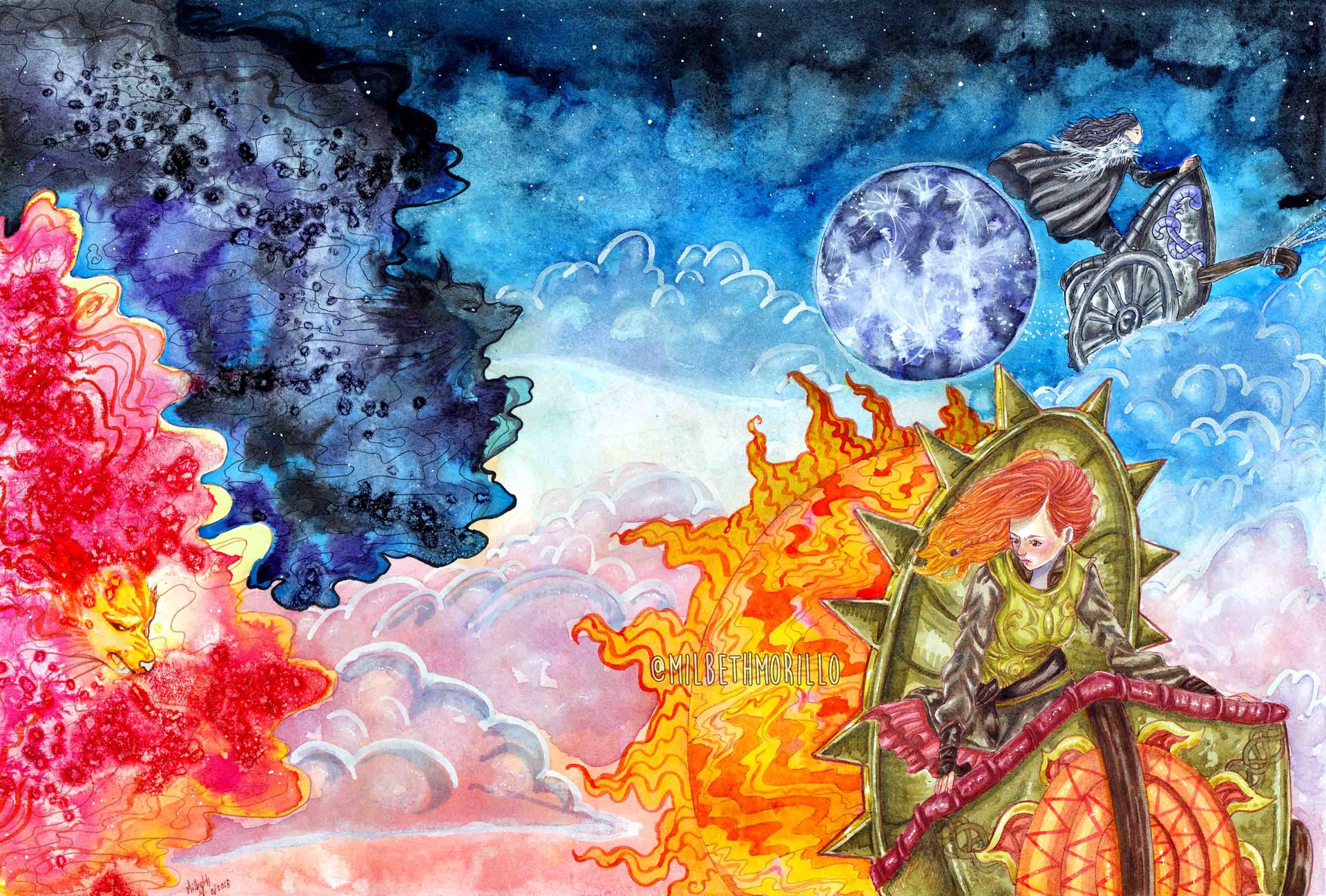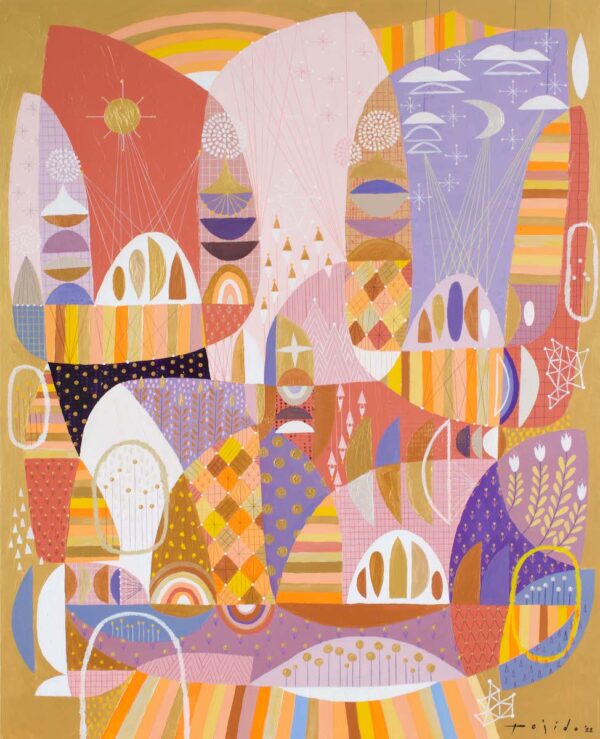Milbeth Morillo Norse gods and goddesses

Sol and Mani Astrid Jaekel Artist & Illustrator
Sol (pronounced like "soul") and Mani (pronounced like "Mah-nee") were the names of two obscure figures in Norse mythology. Sol was female and Mani was male. In some accounts, they mentioned that Sol and Mani were the children of the Midgard man who was so boastful about his family.

Sól and Máni Etsy
Together, Sol and Mani voyage across the sky, marking the progression of time and providing light during both the day and the night. The appellation "Sol" originates from the Old Norse term "sól," which straightforwardly translates to "sun."

Sol and Mani How Two Children Became Gods YouTube
Sol and Mani, in old Norse, translates quite literally to the sun and moon. They are known as the beings and Norse deities who drove the Sun and Moon in their courses through the sky. There isn't much known about Sol and Mani, but Snorri Sturluson's account in the Prose Edda offers some insight. How Sol and Mani Came To Be Sol's Fate Mani's Fate

sol and mani (norse gods reimagined) ImaginaryCharacters
The_Wolves_Pursuing_Sol_and_Mani. November 25, 2012 2745 × 1854 Tales "The Wolves Pursuing the Sun and the Moon" by J.C. Dollman (1909) Previous Image. The Ultimate Online Guide to Norse Mythology and Religion. My Book.

Birth of Life Sol and Maní Gemini art, Visionary art, Occult art
Máni is attested in the Prose Edda, the Poetic Edda, and in Tacitus's Germania. He is the god of the moon, and brother of the goddess of the sun, Sól. It is from him we get our famous "Man-in-the-Moon" in English folklore. Along with his sister and their father, Mundilfäri, Máni is one of the gods associated with the keeping of time.

Mani and Sol by Kruemelforever on DeviantArt
Máni A depiction of Máni and Sól (1895) by Lorenz Frølich. Máni ( Old Norse: [ˈmɑːne]; "Moon" [1]) is the Moon personified in Germanic mythology. Máni, personified, is attested in the Poetic Edda, compiled in the 13th century from earlier traditional sources, and the Prose Edda, written in the 13th century by Snorri Sturluson.

Sol & Mani Age of Ishtaria Wiki FANDOM powered by Wikia
Today we shall tell a tale about Sol and Mani, and how day and night came to be. Let us know what you think about it and we really hope you all enjoy it!#myt.

Sól and Máni Norse Gods The Complete Guide (2023)
Mani and Sol The chariots were ready, the steeds harnessed and impatient to begin what was to be their daily round, but who should guide them along the right road? The gods looked about them, and their attention was attracted to the two beautiful offspring of the giant Mundilfari.

Sól and Máni Wiki Pagans & Witches Amino
Sol among men 'tis called, but with the gods sunna, the dwarfs call it Dvalinn's leika, the Jötuns eyglo, the Alfar fagrahvel, the Æsir's sons alskir. — Thorpe trans. Other kennings for the sun are Daughter of Mundilfari, Sister of the Moon, Wife of Glenr, and Fire of Heaven and of the Air. She and her brother are mentioned in stanza by the.

Milbeth Morillo Norse gods and goddesses
The Sol and Mani were responsible for pulling a chariot across the sky every day and night while simultaneously evading a gruesome death at the hands of wolves. The task was split between the two; Sol operated during the day, and Mani during the night.

Tales of Norse Mythology Sol and Mani YouTube
In Norse mythology, Sól and Máni were the goddess and god of the sun and moon. Unlike other gods of the sky, however, their trip across the sky was an attempt to escape a pair of hungry monsters! According to the Norse people, each day the goddess Sól drove the chariot of the sun across the sky.

Top 19 norse mythology sol and mani en iyi 2022
Wolves Pursuing Sol and Mani Sol in video game Sol Fast Facts: Pronunciation: Soul Origin: Scandinavia Role: Sun goddess, healer Symbols: Sun Children: Sunna (possibly) Siblings: Mani, Sinthgunt Who Is Sol?

Nordic Sky Worlds “Sol And Mani, the Sun Goddess and the Moon God" by
In Norse mythology, Sköll ( Old Norse: Skǫll, "Treachery" [1] or "Mockery" [2]) is a wolf that, according to Snorri Sturluson 's Prose Edda, chases the Sun (personified as a goddess, Sól) riding her chariot across the sky. Hati Hróðvitnisson chases the Moon (personified, as Máni) during the night.

Sol and Mani A4 Pen Illustration Print Norse Mythology Etsy UK
Sól (Germanic mythology) A depiction of Máni and Sól (1895) by Lorenz Frølich Sól ( Old Norse: [ˈsoːl], "Sun") [1] or Sunna ( Old High German, and existing as an Old Norse and Icelandic synonym: see Wiktionary sunna, "Sun") is the Sun personified in Germanic mythology.

Sol and Mani Astrid Jaekel Artist & Illustrator
SOL AND MANI "The Wolves Pursuing Sol and Mani" by J.C. Dollman (1909) Sol (pronounced like the English word "soul"; Old Norse Sól, "Sun") and Mani (pronounced "MAH-nee"; Old Norse Máni, "Moon"), are, as their names suggest, the divinities of the sun and the moon, respectively. Sol is female, and Mani male.

Sol et Mani Dieux du Soleil & de la Lune dans la Mythologie Nordique
In Norse mythology, Sol and Mani were the Sun and Moon, or more precisely, the beings who drove the Sun and Moon in their courses through the sky. Sol and Mani were sister and brother, and both were fair and beautiful.